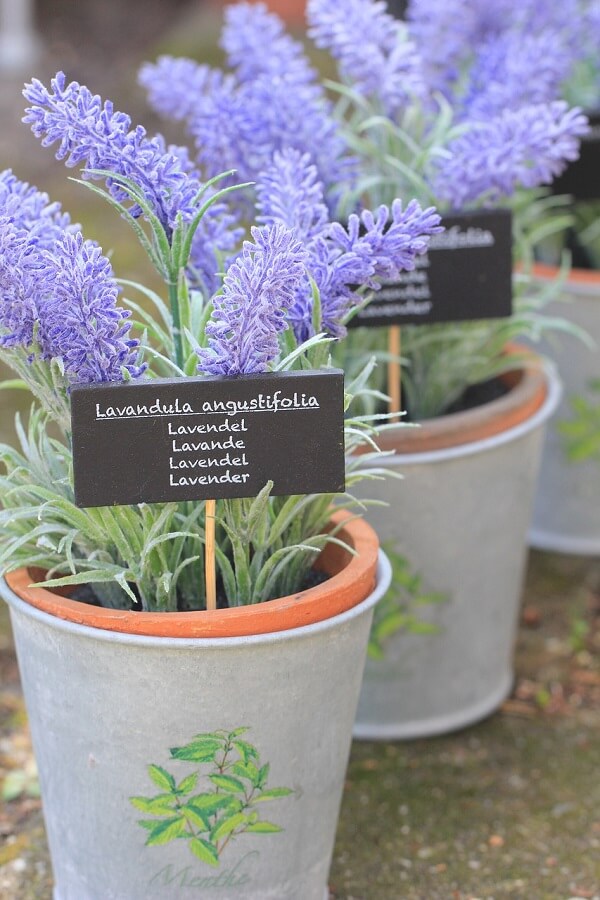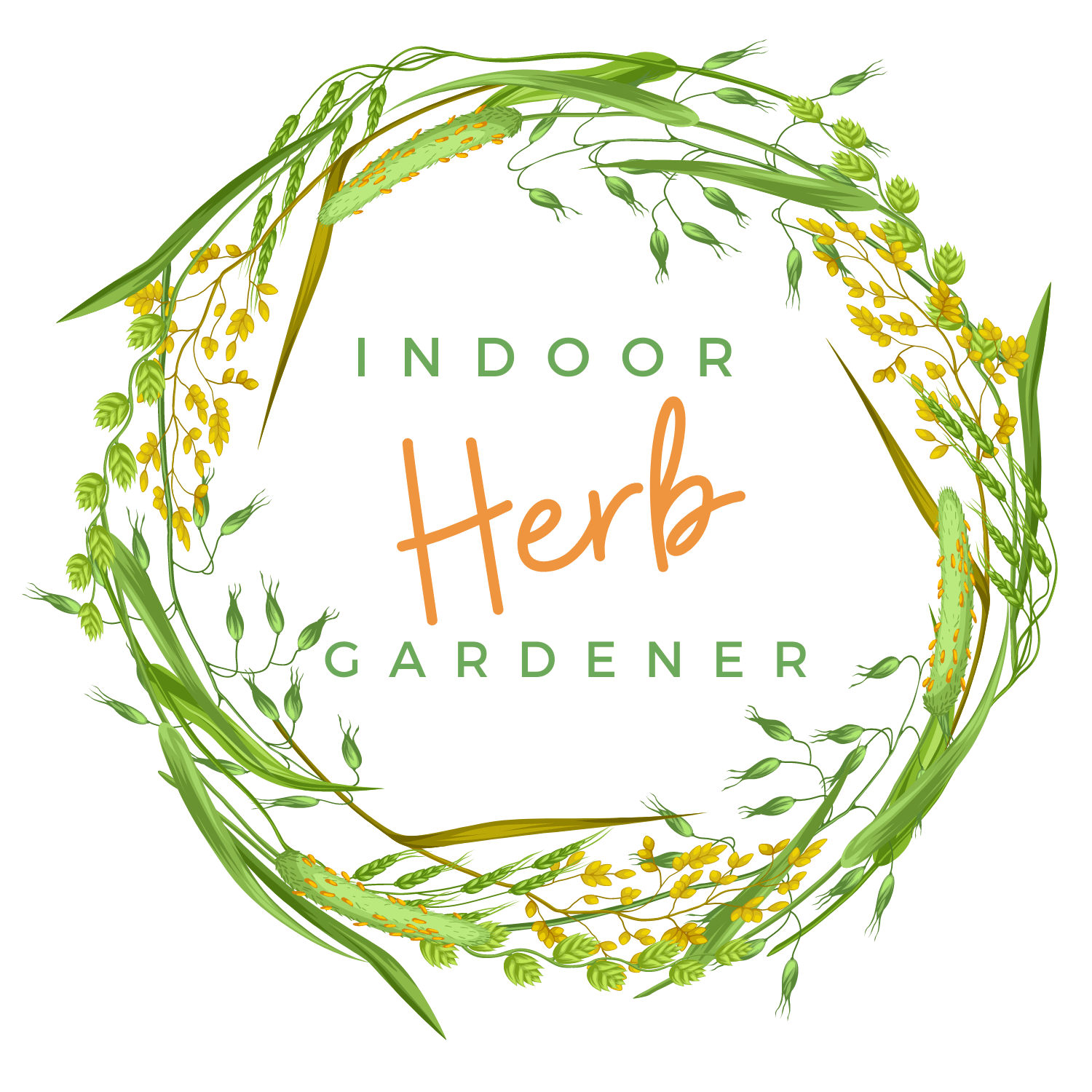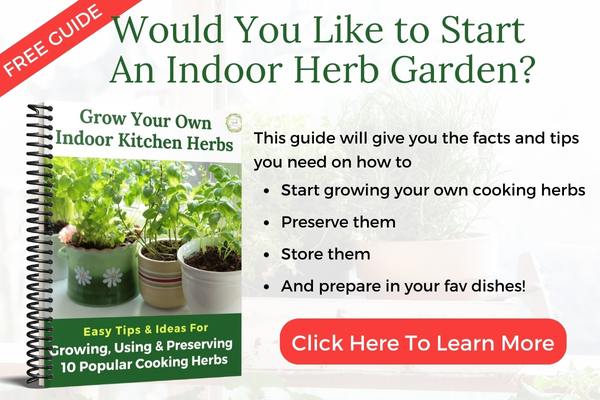Hey! By the way… IndoorHerbGardener is reader-supported. When you buy through links on our site, we may earn an affiliate commission and as an Amazon affiliate, we earn from qualifying purchases. Thanks in advance for your support!

There’s nothing better than adding an extra kick of flavor to your dishes, with fresh herbs. Did you know that it is super easy to grow herbs indoors right on your kitchen sill if you know how to start an indoor herb garden, from scratch?
Apart from helping you incorporate an enhanced flavor profile into your dishes, an indoor herb garden has several other benefits. It adds some liveliness and style to your space, as the greens beautifully complement any aesthetic.
Given below is a detailed guide on growing herbs indoors so that your space will look, feel, and smell fabulous all year round!
Steps on How To Start An Indoor Herb Garden
1. Choose Your Herbs
The first step toward starting your journey into indoor gardening is, of course, selecting the herbs you wish to grow. There is no fixed rule when it comes to selecting your herbs. If you’re a beginner in growing herbs indoors, you can always buy pre-potted plants.
Compact and dwarf herbs are usually the best suited for an indoor herb garden, as these are accustomed to thriving even in a limited space. If you’re looking to start a kitchen herb garden, then, the best herbs for you will depend on your flavor palette. After all, you don’t want to grow something that your family won’t relish!
Some of the best herbs to grow indoors include dill, mint, rosemary, cilantro, parsley, chives, thyme, and bay leaves, to name a few. Of course, you are free to explore more herbs depending on whether you want aromatic, spicy, or savory herbs.
2. Get some Herb Pots
When you’re growing herbs indoors, some great herb pots go a long way. To select the ideal pot or indoor herb planter, you will have to ensure a few things. First, you’ll have to make sure that your pots allow excess water to drain away easily.
Just like any other plant, indoor herbs do not like to be left in excess, standing water. So, the indoor herb planter or pot you choose will need to have sufficient drainage holes, so that excess water can drain out.
The size of your pot also contributes to your plants’ health. For example, basil requires a deeper pot as it has long roots. If you select a pot that is too big, it will be hard for you to keep the soil’s moisture distributed evenly. If it is too small, your herb’s growth may be stunted.
Pots usually come in three materials – plastic, clay and ceramic. You can select the ideal material based on your home’s humidity levels. A ceramic pot is recommended for drier environments, as these retain the water, as compared to porous, clay pots.
Make sure that every pot has a saucer or decorative tray underneath it, for the excess water to drain into. This way, you’ll avoid ruining any furniture with muddy water. Also, don’t hesitate to think outside the pot!
You don’t have to buy indoor herb planters or pots. Mason jars, teas tins, or glass bottles, are also perfect and add a modern aesthetic. Just make sure whatever you choose has really good drainage!
3. Select the Potting Mix
Let’s establish the difference between potting soil and potting mixes. Yes, there is a difference between the two! The latter tends to be much lighter and contains some little white stones, called perlite which is an aerator. Potting mixes are what you want to select for your indoor herb garden.
If your mix still seems a bit heavy, you can add more perlite or mix in some vermiculite. In fact, vermiculite is perfect if your indoor climate is a bit dry, as it helps retain water.
Never use soil directly from the ground for your kitchen herb garden! It may be too compact for your indoor plants to thrive in, and may also contain pests that we KNOW you don’t want in your home.
If you’re up for it, you can create your own mix with some coco peat or peat moss, coarse-grained sand, and of course, perlite. This may be a more cost-effective option, and you can curate the perfect mix for your herbs. For example, Mediterranean herbs like chives or basil, prefer a dry mix, so you can add more sand for them.
4. Potting your indoor herbs
When you’re potting your indoor herbs, it is essential that you don’t combine multiple herbs together. Instead, you want to plant each one in its own container. Of course, for outdoor herbs, you can do so, but for growing herbs indoors it is not recommended.
Not only do separate pots offer much more flexibility, but they allow you to rotate the herbs to adjust the light or air circulation. Also, in the unfortunate event that an herb is infested by fruit flies or some other pests, it avoids its spread to other plants.
Lastly, giving each of your indoor herbs a separate container enables you to address every plant’s specific needs. By doing so, you ensure the long-term success and health of your beautiful green friends!
5. Taking care of the Light
Why is light so important for your indoor herb garden? It stimulates their growth, but there is also another reason. The flavor profile of your herbs actually depends on the intensity of sunlight they receive! So, the more light that your herb gets, the better it will taste.
Most herbs prefer anywhere between six to eight hours of direct natural light. So the ideal location to place your potted herbs is near a bright, sunny, south-facing window. If your window-sill cannot accommodate all the pots, you can place a table beneath the window.
What if you can’t have a windowsill herb garden that gets ample, bright light? Don’t worry, all hope is not lost. You just need to provide an additional, artificial light source.
For an array of potted herbs, you can buy a fluorescent or LED grow light set online. Artificial light sources should be used for around ten hours a day for proper plant growth. An easier option is to select herbs that require a little less time in the sun. Some of the best herbs to grow indoors when direct sunlight is an issue include parsley and mint.
6. Make sure the Temperature is right
The ambient temperature for plants is around 65 to 70 degrees Fahrenheit, which is found in most home environments. While placing a windowsill herb garden ensure that the leaves of the herbs do not touch the glass panes.
The heat generated by the reflected sunlight on the glass may burn their leaves. If there’s a constant draft from open windows, the plants may get too cold. This can easily be resolved by insulating your windows.
Temperature plays an important role in growth for some plants such as Basil. Basil leaves revel in the sun’s warmth. If the leaves start to wilt or discolor, it might mean that your basil plant isn’t getting enough sunlight.

7. Watering your herbs
Watering indoor herbs can be quite tricky. The key to striking the perfect watering balance is to let the soil mix dry out a little, as you’re watering. To gauge whether your herbs need water, measure the dryness of the mix, with your finger or a stick. If the soil feels dry for about 2 inches beneath the surface, you can start watering.
For a strong, healthy root system, it is vital that you water your plants gradually. If you water the herbs too quickly, chances are that the soil may not absorb sufficient water, before it drains out. You can also spray a water mist on the leaves, to keep them fresh.
Another misconception is that herbs need to be watered daily. For healthy growth, a watering schedule spaced two or three times a week is perfect. You can also invest in a water meter, if you’re struggling with either over or under-watering your herbs.
8. Don’t miss out on Fertilizers
You need to nurture your indoor herb garden by feeding it! A fertilizer whose prominent ingredient is fish emulsion, or swede extract, is the best suited for indoor herbs. Both of these ingredients are rich in nitrogen which stimulates healthy, leafy growth.
In the summer months when plants grow actively, you can add fertilizer to the potting mix once a week. In winters, the growth is slower so you fertilize your plants once a month.
9. Show Them Some Love!
Research has shown that talking to your plants actually stimulates growth! How? Well, the carbon dioxide you release when talking helps your herbs make food. Also, gently stroking the leaves, just like you would do for your pet or child goes a long way!
The motion replicates that of strong winds and encourages the plant stems to be strong and healthy. So, don’t forget to let your plants know that they’re loved beyond measure.
If you want a consistent supply of fresh herbs all through the year, you should start your garden indoors. Indoor herb gardens not only add a delicious and vibrant dimension to your food but also help make your space pop. With the help of this guide on how to start an indoor herb garden, you can easily create and enjoy a beautiful herb garden indoors.
More articles on how to grow herbs.
8 Herbs You Can Grow That Help Alleviate Stress
Tips For Planning Your Herb Garden
7 of the Best Medicinal Herbs to Grow Indoors

